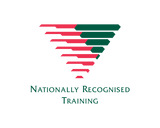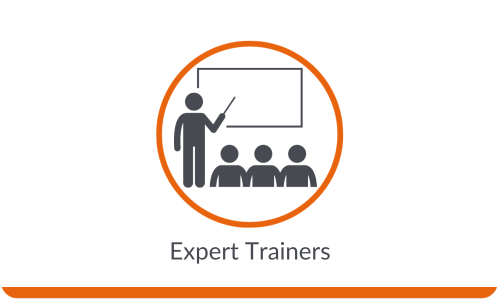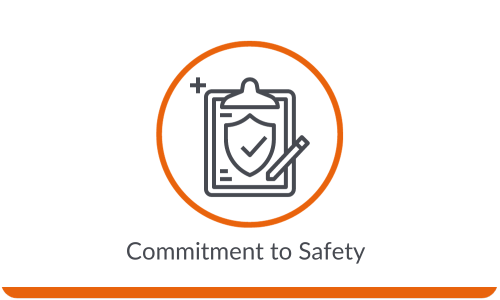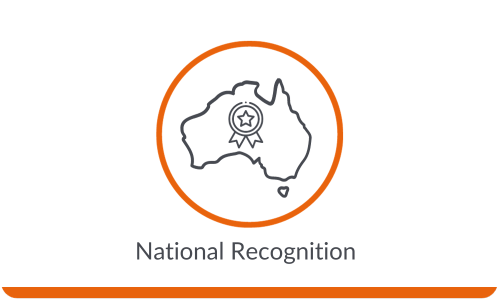Firefighting Breathing Apparatus Course (SCBA)
REQUEST A GROUP TRAINING QUOTE NOW!
What people are saying
Overview | Firefighting Breathing Apparatus Course
Enhance your firefighting team’s proficiency in hazardous environments with our Firefighting Breathing Apparatus Course, specifically designed for the unique demands of fire services. This on-site program is tailored to suit the rigorous needs of firefighting units, ensuring the training is both relevant and directly applicable to real-world firefighting scenarios.
Conducted within your fire department’s setting, our Firefighting Breathing Apparatus Course provides a realistic and interactive training experience. We emphasize scenarios that firefighters are likely to encounter, ensuring that the skills and techniques taught are not only practical but immediately applicable to frontline duties.
Recognizing the diverse nature and high-stakes environment of firefighting teams, our course underscores the mastery of breathing apparatus use, leadership in high-pressure situations, effective communication, and teamwork under duress. This approach enhances unit cohesion and significantly amplifies the team’s effectiveness in emergency responses.
With scheduling designed to accommodate the demanding nature of firefighting, our training is structured to blend seamlessly with your department’s operational requirements, minimizing impact on essential services. Our program delves into more than just the basics of breathing apparatus use; it focuses on building operational confidence, heightened situational awareness, and strategic emergency response skills, enabling firefighters to safely and effectively navigate hazardous environments.
Choose our Firefighting Breathing Apparatus Course for a comprehensive, impactful approach to enhance your team’s capabilities in using breathing apparatus during firefighting operations. It’s a critical step towards ensuring a well-prepared, proficient firefighting team.
Firefighting Breathing Apparatus Training: Essential for Emergency Response Teams
Our Firefighting Breathing Apparatus course is crucial for emergency response teams who are the first responders to fire incidents and hazardous environments across various high-risk industries. This specialised training ensures that these teams are fully equipped with the skills and knowledge necessary to safely use respiratory protection equipment in emergency situations. Here’s how this training is particularly relevant to different sectors:
- Firefighting and Emergency Services: Fundamental for teams regularly confronting smoke-filled environments or toxic fumes, preparing them for diverse emergency scenarios.
- Oil and Gas Industry: Our course prepares responders for emergencies in the oil and gas sectors, such as offshore rig fires or refinery gas leaks, where immediate and skilled intervention is critical.
- Chemical Manufacturing: We train responders in handling potential chemical fires or toxic gas exposures, common emergencies in chemical plants.
- Mining: Tailored for responses to underground mining incidents, where fires and hazardous gas leaks like methane and carbon monoxide are prevalent.
- Construction: Emergency teams learn to manage fire incidents in confined spaces or high-risk construction sites through this course.
- Utilities (Power Generation and Distribution): Focused on preparing teams for electrical fire emergencies and hazardous gas situations in utility facilities.
- Maritime Industry: The course equips maritime emergency responders for shipboard and offshore platform fire and gas leak situations.
- Aviation Industry: Airport fire services and emergency teams receive training for aircraft fire incidents and related emergencies.
- Military and Defence: Military personnel are trained to handle fire emergencies and hazardous environments during various operations.
- Heavy Manufacturing and Steel Industry: Responders are prepared for industrial fires and smoke or toxic fume emergencies typical in heavy manufacturing sectors.
- Waste Management and Recycling: Training focuses on equipping teams for fire incidents and hazardous gas exposures in waste treatment facilities.
- Automotive Industry: Prepares responders for fire emergencies in automotive manufacturing plants, where flammable materials heighten fire risks.
Enrolling your team in our Firefighting Breathing Apparatus course is not just a course; it’s an essential investment in the safety and efficacy of emergency response teams across a multitude of high-risk industries. It ensures they are ready to face and effectively manage any fire or hazardous situation they might encounter in these sectors.
PROGRAM DETAILS
Students who are deemed competent will receive a Statement of Attainment, which is recognised under the Australian Qualifications Framework. This training is nationally recognised:
Intrinsic Safety Pty Ltd (RTO45803) is responsible under the National Vocational Education and Training Regulator Act 2011 for the quality of the training and assessment being delivered in this course and for the issuance of all AQF certificates.

Course Fees
- Group Bookings Only: Currently, we’re focusing on group training sessions. Individual course bookings are not available at this time.
Refunds & Fee Protection
- Your Guide to Policies: For detailed information on refunds and fee protection, please consult our Pre-Enrolment Participant Handbook.
Payment Information
- Group Bookings: Custom payment solutions for every team. We’ll work with you to set up terms that align with your needs and ours.
This course can be delivered/assessed in the workplace or at a facility organised by Intrinsic Safety Pty Ltd (RTO 45803).
Course Duration & Modes
- Face to Face Training: 2 day (16-hour) intensive, hands-on session.
- Blended/Refresher Training: Mix of online pre-learning and 8-hour practical session, ideal for skill updates.
Each format is tailored to different learning styles and schedules, ensuring effective and efficient Firefighting Breathing Apparatus Course.
Our detailed course outline ensures a thorough grasp of:
Regulatory and Organizational Framework:
- Introduction
- Regulatory Requirements
- Organisational WHS Requirements
- Industry Standards
- Organisational Policies And Procedures
Safety Procedures and Hazards:
- Safe Work Procedures
- Operational Procedures
- Life Safety Hazards
- Types Of Hazardous Atmospheres
- Hazard Identification And Risk Control
- Communicating Hazards And Risks
- Applying Risk Controls
- Applying Life Safety Priorities
- Dynamic Risk Assessment
- Safe Person Approach
- Maintaining Continuous Situational Awareness
Personal Protective Equipment and Respiratory System:
- Personal Protective Equipment (PPE)
- The Respiratory System
- Anatomical Structure
- Gas Exchange Process
- Breathing Mechanics
- Respiratory Control
- Importance In Emergency Response
- Effect Of SCBA On Respiratory Process
Understanding SCBA and Its Limitations:
- Factors Affecting Air Use
- Limitations Of The Wearer
- Limitations Of Equipment
- Limitations Of Air Supply
- Effect Of Hazardous Atmosphere On Human Body
- Respiratory System Impact
- Cardiovascular System Stress
- Neurological Effects
- Dermatological And Ocular Effects
- Long-Term Health Consequences
- SCBA Role In Personal Protection
Breathing Apparatus Operations:
- Breathing Apparatus Overview
- Types Of Breathing Apparatus
- Characteristics Of Breathing Apparatus (SCBA)
- Components Of Breathing Apparatus (SCBA)
- Self-Contained Breathing Apparatus Operation
- Pre-Use Operational Checks
- Pre-Use Checks
- Reporting And Recording Faults
- Donning Checks
Auxiliary Equipment and Communication:
- Ancillary Equipment
- BA Tally
- Distress Signal Units (DSU)
- Torch
- Personal Line
- Communicating In Breathing Apparatus
BA Operational Techniques and Responsibilities:
- Undertaking Response Activities In SCBA
- Planning For Entry
- Movement Techniques In Reduced Visibility
- Methods Of Movement
- Conducting BA Search In Low Visibility Conditions
- BA Control Procedures
- BA Entry Control Officer (BAECO) Duties
- Calculating Working Duration
- Working Duration Considerations
- BA Wearer Responsibilities
Emergency Procedures and Post-Use Activities:
- Emergency Procedures
- Removing Breathing Apparatus (Shutting Down)
- After Use Servicing
- Returning An SCBA To Service (Recommissioning)
- Post-Incident Debriefing
Assessment Methods
We provide a well-rounded assessment process that encompasses both practical tasks and scenarios, as well as written theory assessments, throughout the training. This comprehensive approach ensures a thorough evaluation of your skills and knowledge, allowing you to demonstrate your competency in real-world application and theoretical understanding.
Specific assessment tasks to be undertaken include:
- Knowledge Assessment
- Conduct Pre-Use Checks and Tests – Practical
- Operate SCBA – Practical
- Implement Entrapment Procedures – Practical
- Conclude SCBA Operations and Refurbish – Practical
Entry Requirements
- Physical Capacity: Ability to perform physical tasks wearing breathing apparatus in various environments.
- Pre-Course Study: Depending on the course mode, online pre-course work may be required before the face-to-face session.
- Online Study Requirements: A computer, smartphone, tablet, or similar device with internet access is needed for online or pre-course studies.
For comprehensive details on your rights and responsibilities, including our complaints and appeals process, kindly refer to the Pre-Enrolment Participant Handbook on our website.
We’re committed to fostering an enriching learning environment. Key to this is understanding your Language, Literacy, Numeracy (LLN), and Digital Literacy skills, essential for your course success.
LLN Evaluation Verification
- Assessing Your Needs: Check if you need an LLN Evaluation based on your prior qualifications through our LLN Evaluation Verification Form.
Digital Literacy Checklist
- Embracing Technology: Complete our Pre-Enrolment Digital Literacy Checklist to help us tailor our support to enhance your digital skills.
Formal LLN Evaluation
- Tailored Support: If required, you can complete our Formal LLN Evaluation online, helping us understand your skill levels for personalised support.
These tools ensure you start your course with all the support you need for a successful learning journey. For any questions or extra assistance, feel free to contact our support team at [email protected].
REQUEST A GROUP TRAINING QUOTE NOW!
Pre-Enrolment Participant Handbook
Intrinsic Safety Pty Ltd (RTO 45803) offers a detailed pre-enrolment participant handbook for those interested in our programs. This handbook helps you understand your rights when you enrol with us.
We advise you to read and understand the handbook thoroughly before enrolling in any nationally accredited training program offered by Intrinsic Safety Pty Ltd. This ensures you are well-informed about the enrolment process and the program details.
If there is anything in the handbook where you require further clarification, please do not hesitate to call Intrinsic Safety on 1300 990 336 and one of our friendly team members will be more than happy to assist you.
LLN and Digital Literacy
You can complete these activities, using the links below now, or once you have enrolled:
- LLN Evaluation: It’s important for us to understand your language, literacy, and numeracy skills to best support your learning. Please complete the LLN Evaluation Verification, accessible HERE.
- Digital Literacy Checklist: To ensure you’re prepared for our digital learning environment, please fill out the Pre-Enrolment Digital Literacy Checklist available HERE.

Now is the time to get qualified.
discover our other training courses
Intrinsic Safety is an established, trusted, quality training provider with an extensive list of corporate clients and individuals who have attended our training courses over the years in a variety of learning areas:
REQUEST A GROUP TRAINING QUOTE NOW!
Ready to start your training with Intrinsic Safety?
Enrol Now
Find and enrol in the course you need to complete today.
Call Us
Speak to one of our Training Specialists Monday – Friday from 7:30am – 5pm (AEST).
Submit an Enquiry
Not in a rush? Simply submit your enquiry and we look forward to speaking with you shortly.
Locate Us
Looking for our location details? We deliver courses throughout Australia.
Why Study with Us?







